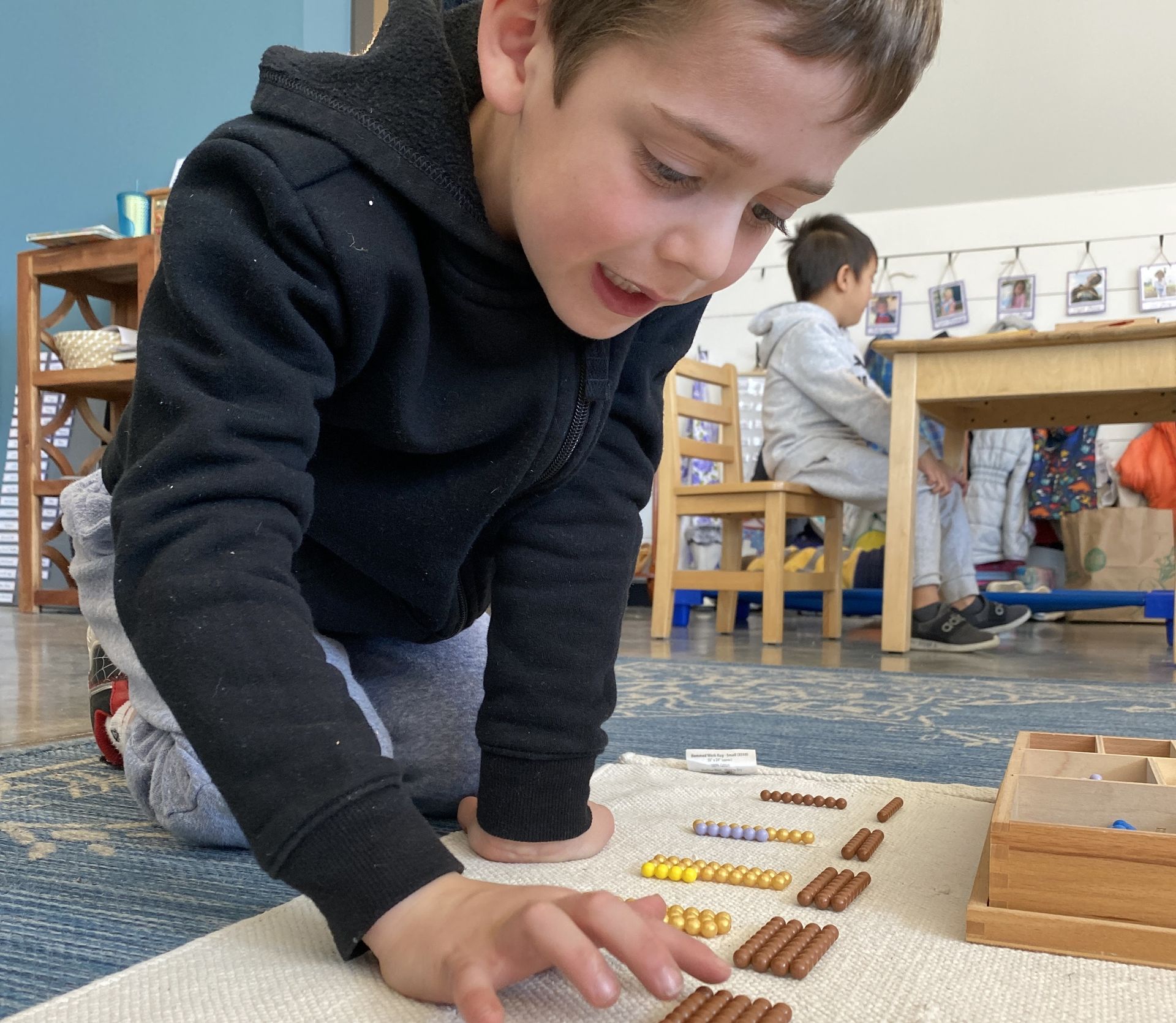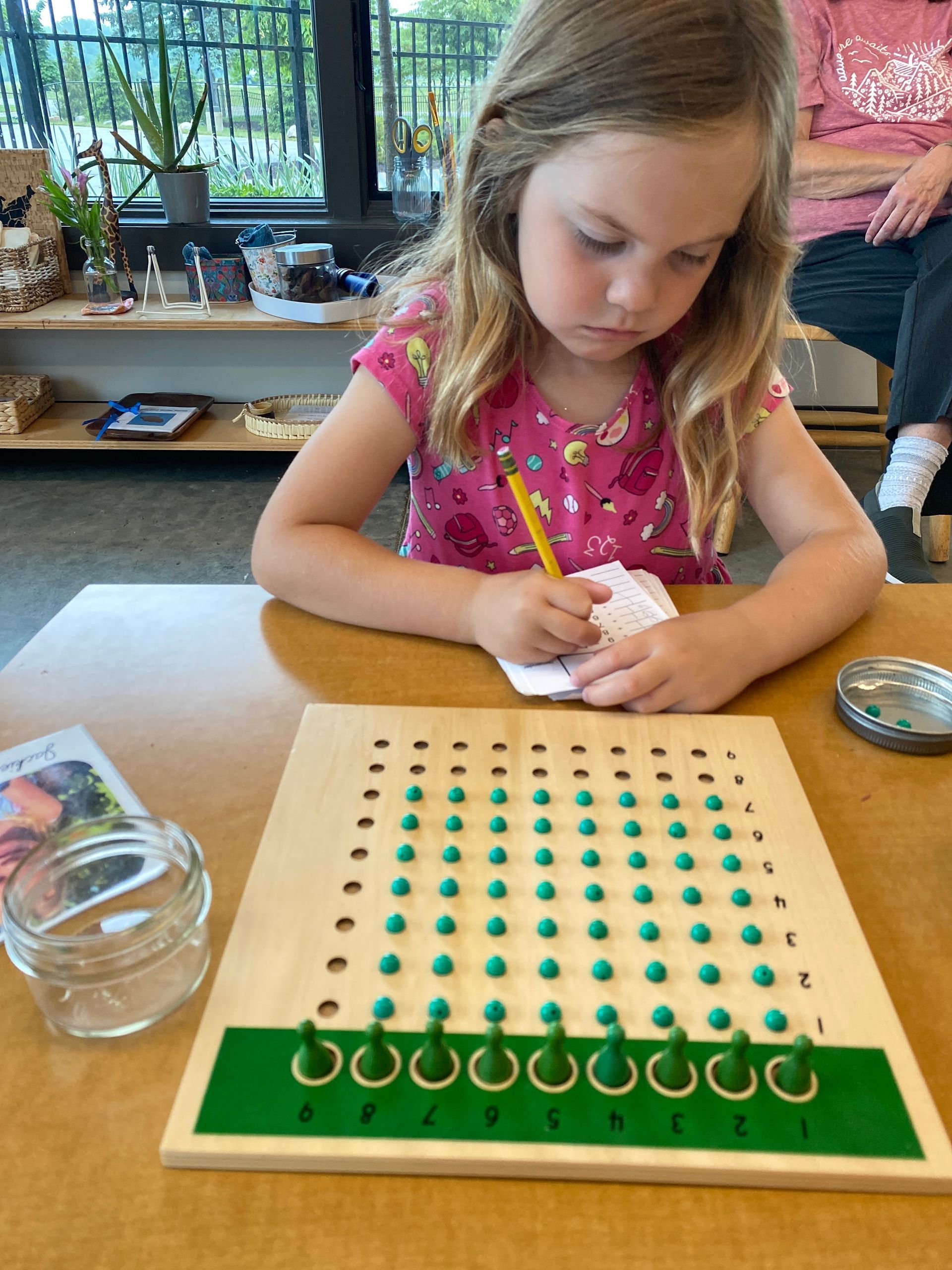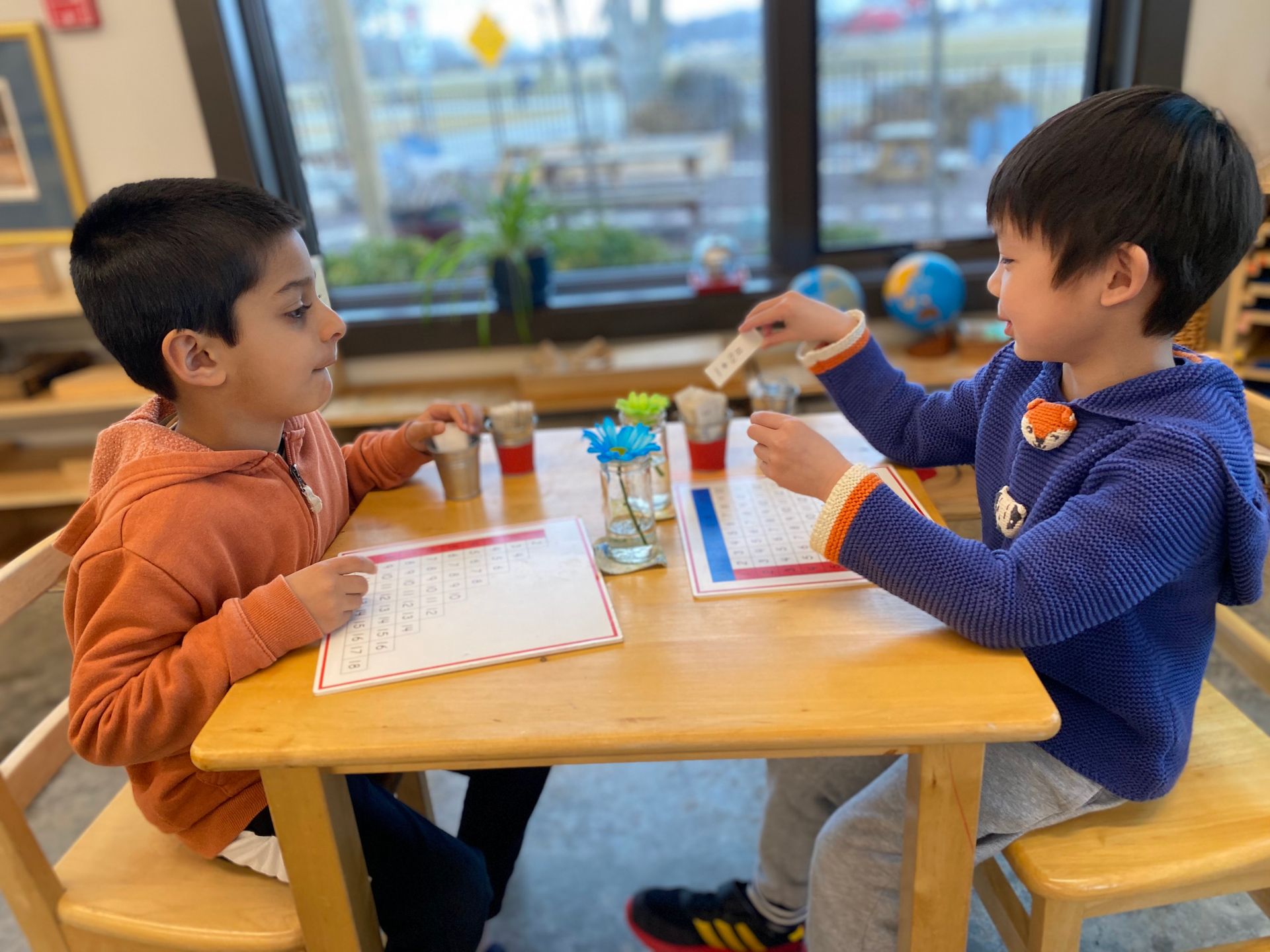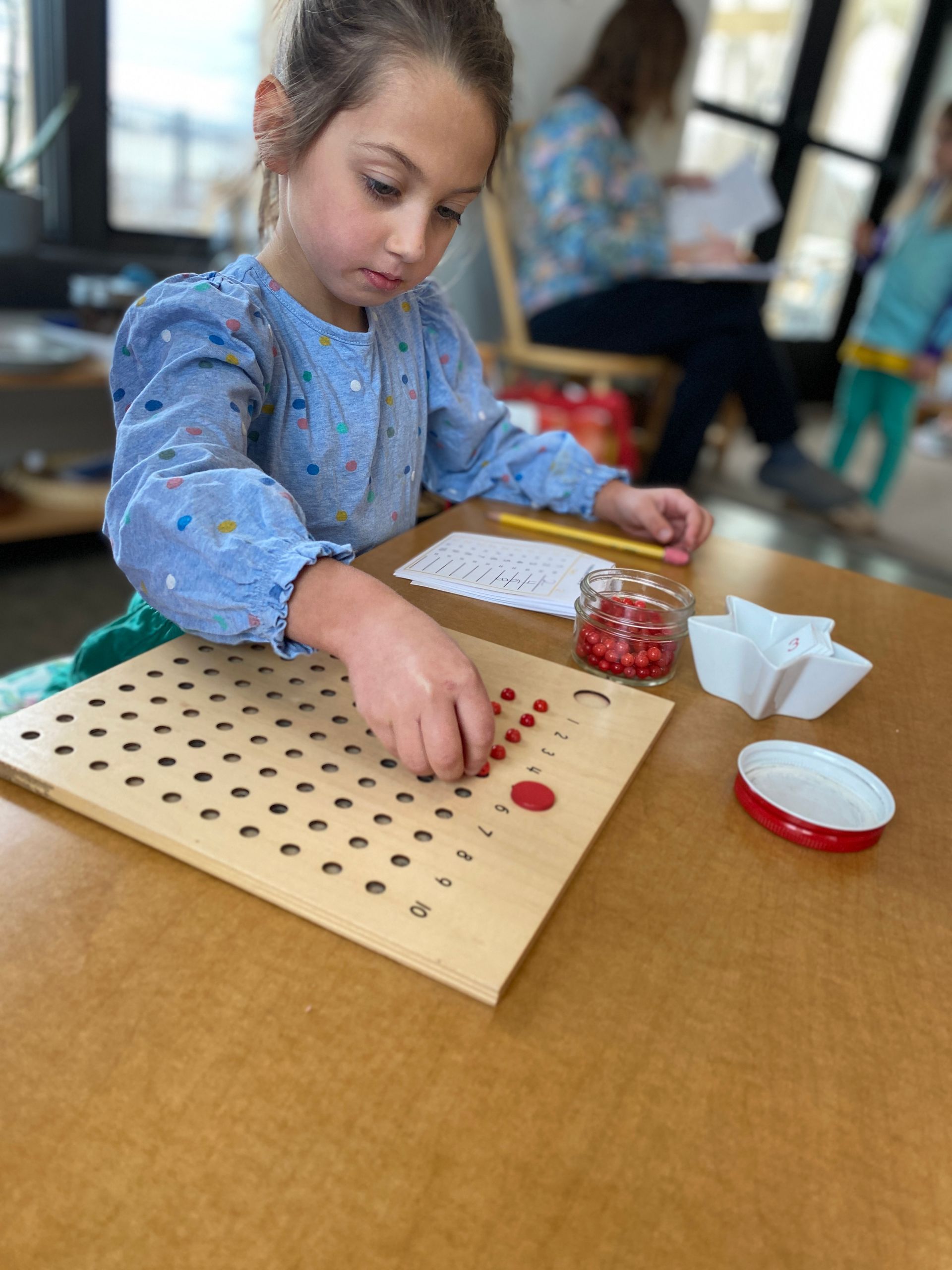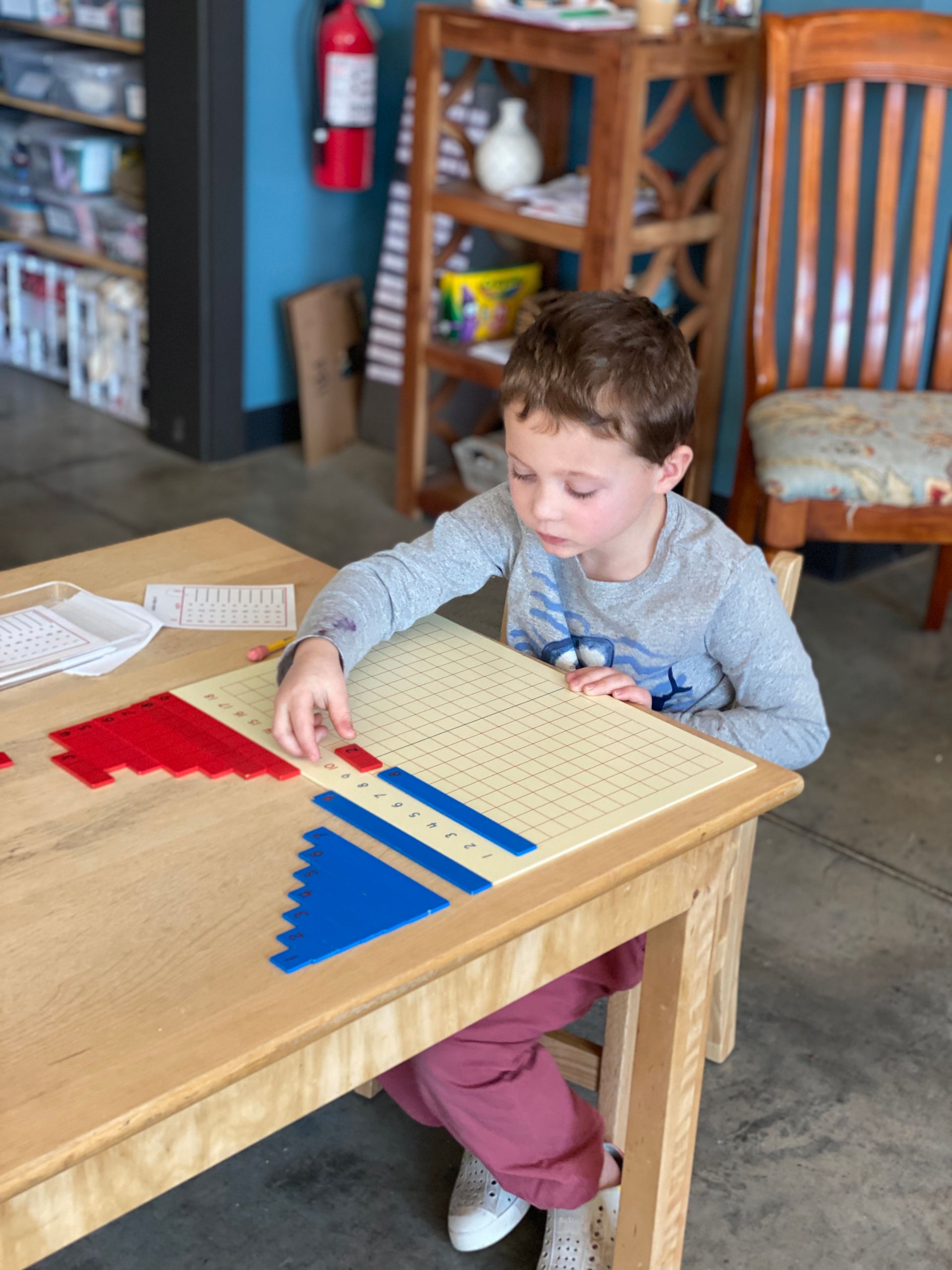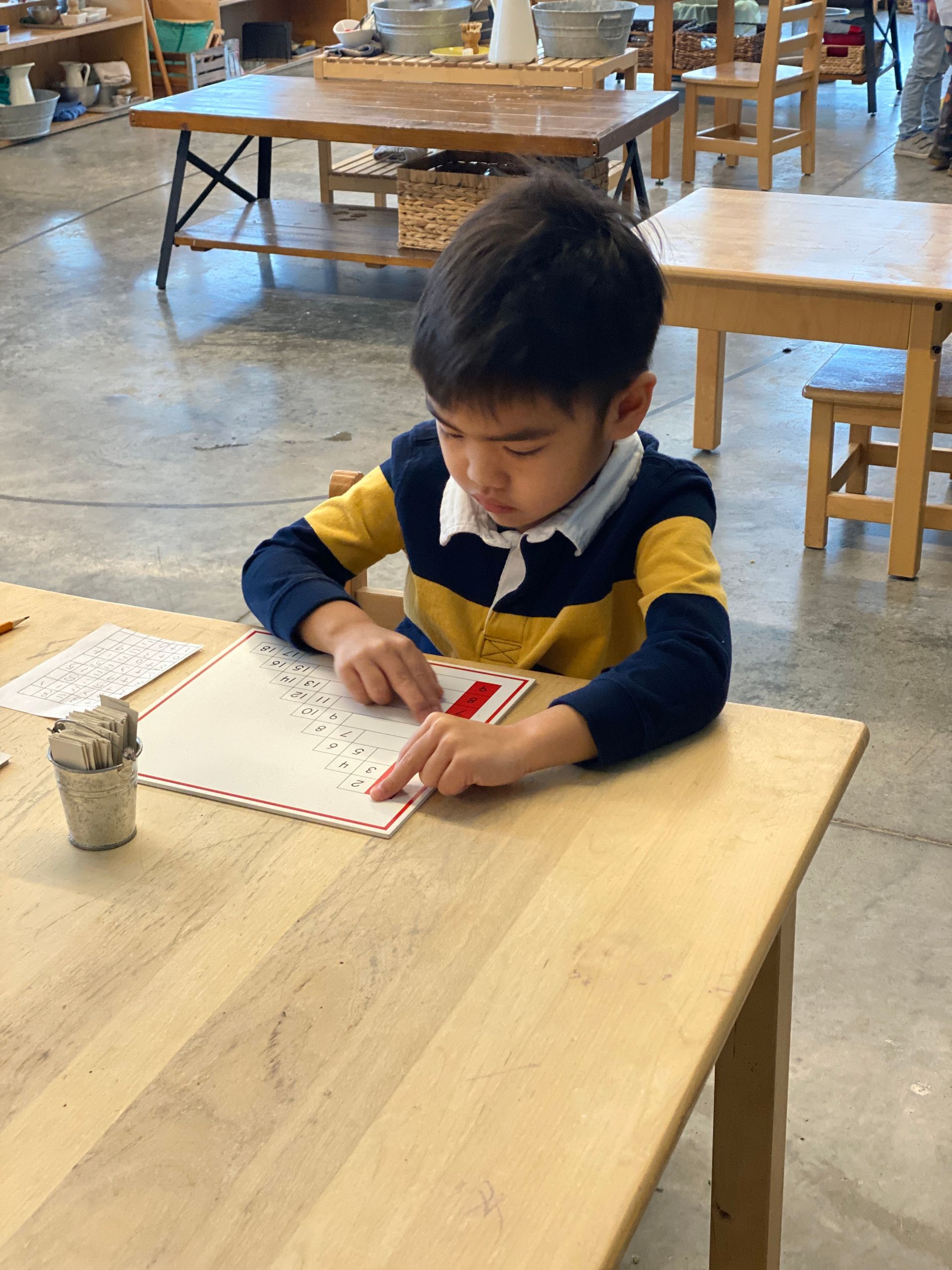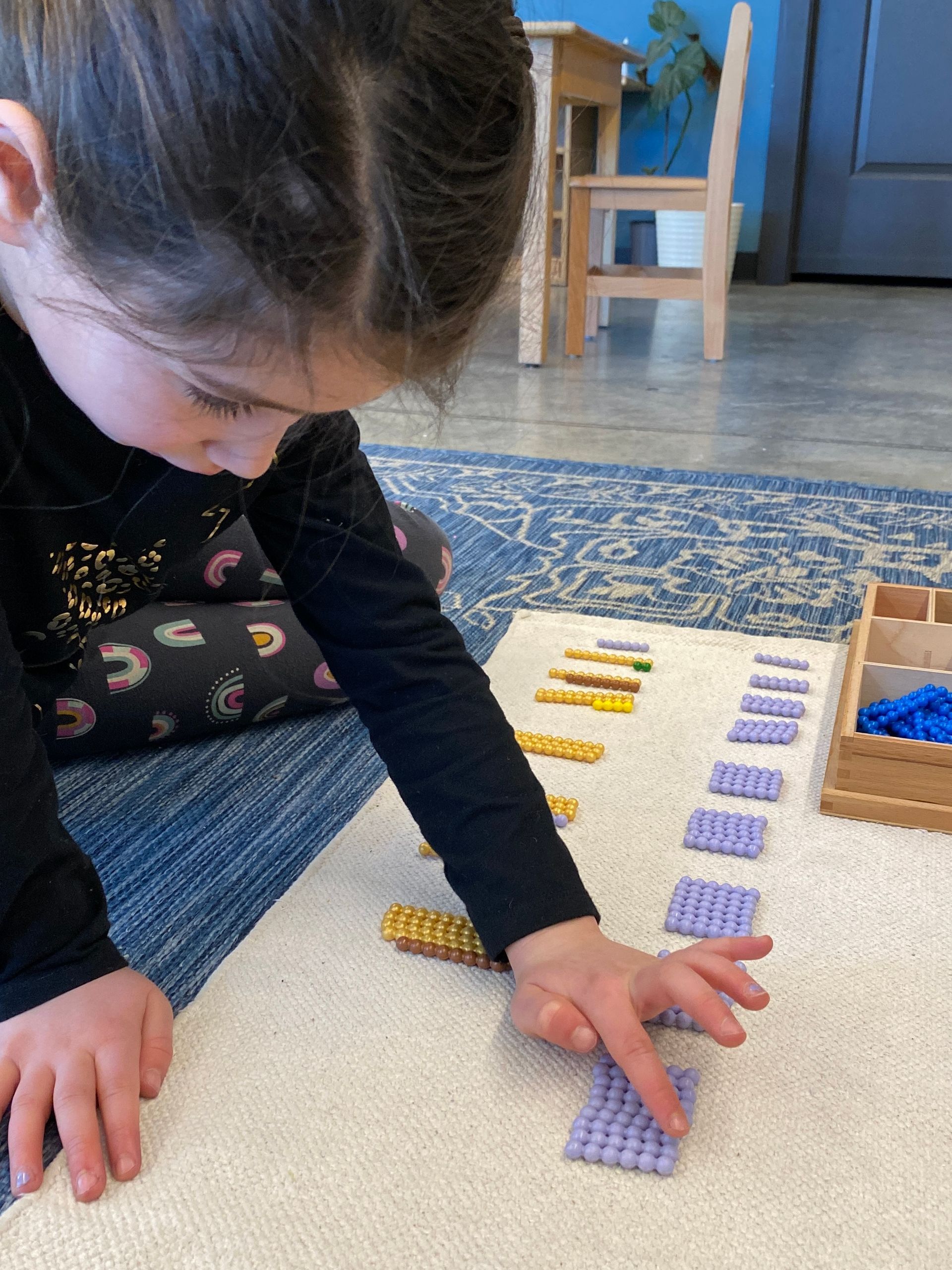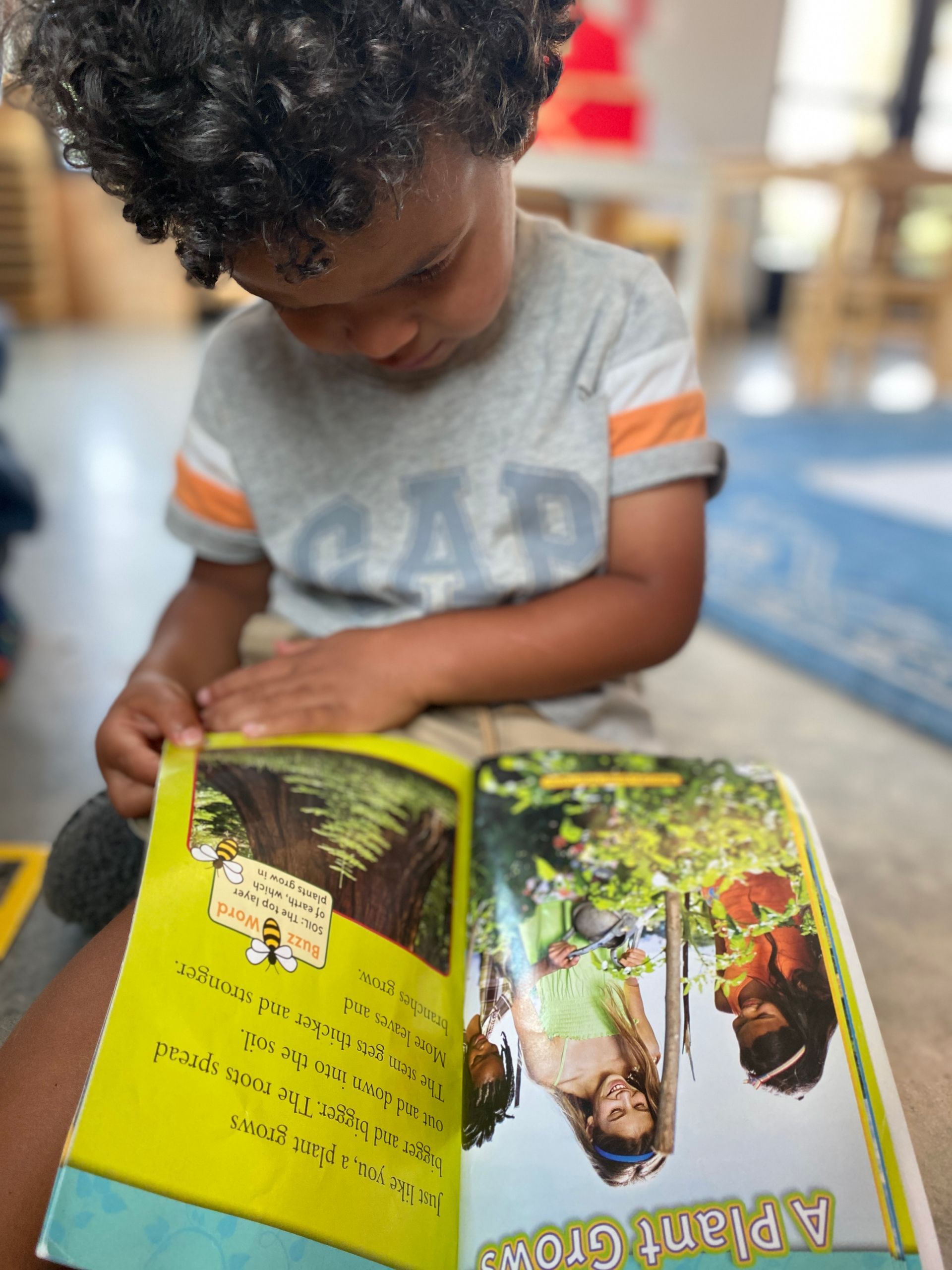“In the old way the teacher made the children learn the multiplication tables by heart and then taught them to do the sums. Today children handle rods of different lengths and learn the proportions they bear to one another by arranging them accurately. This method leads them in a natural way from practice to principle.”
MARIA MONTESSORI
Math in the Montessori primary classrooms focuses heavily on concrete materials. Children in this age group think in the concrete and fare better when able to manipulate materials with their hands. The progression through the math materials leads the child to more abstract mathematical concepts as they approach the end of their primary journey and begin the next plane of development. The stage of development for these young children and their need for the concrete is reflected in the design of the materials. The concrete is always introduced first, followed by the symbol which is more abstract and then finally the two are combined, highlighting the one-to-one correspondence. Maria Montessori was ahead of her time in developing materials and designing the environment to suit the needs of the children who work within.
When we think about math in a traditional setting, there is counting, number recognition and math facts. In Montessori, we find all these concepts including more. Montessori math at the primary level is divided into six different groups. The six groups of math contain Numbers 1-10, The Decimal System, Linear Counting, Memorization of Essential Combinations, Passage to Abstraction and Fractions.
Let’s bring our focus on Group Four of Math: Memorization of Essential Combinations. Before the child reaches this step in the progression of materials, she has already demonstrated a mastery of materials and concepts from the other three groups of math. She would have a 1:1 correspondence, understand place value into the thousands category, and have worked with concrete material in order to master operations of addition, multiplication, subtraction and division. She would also understand the concept of exchanging (as we call it) or carrying and borrowing quantities. The idea that 10 units are the same as 1 ten, 10 tens are the same as 1 hundred and 10 hundred are the same as 1 thousand would already be ingrained in her thinking and mathematical output with four-digit equations. She would also be able to count to 1,000 and recognize these numbers.
The child is now ready to progress to materials within Group Four of Math. Memorization of Essential Combinations includes learning math facts and various combinations within a math operation. The concept of exchanging categories must be mastered prior to work within this group. Children who often work at home on math facts prior to working with the decimal system and operations can have a difficult time adding 1,245 plus 3,457. When it is time to write down the equation when working with the Stamp Game, they will often want to write down 12 units. They know that 7 + 5 = 12 but haven't understood that 10 of those units will need to be exchanged for 1 ten (carrying the one). The material within Group Four of Math includes the Snake Games, Strip Boards, Practice Charts, Geometric Multiplication Bead Bars and the Unit Division Board. All four operations conclude its work by the children being able to complete a Blank Chart. This verifies the knowledge of the respective math facts.
The children have worked quite diligently to come to the work of Memorization. Instead of simply memorizing math facts, our Montessori materials present a variety of ways to help bring these necessary facts into the child’s long-term memory. As the children are headed into the next plane of development, often they share in this memorization work alongside a friend and they delight in quizzing one another! Montessori’s approach to math was and continues to be quite brilliant!

